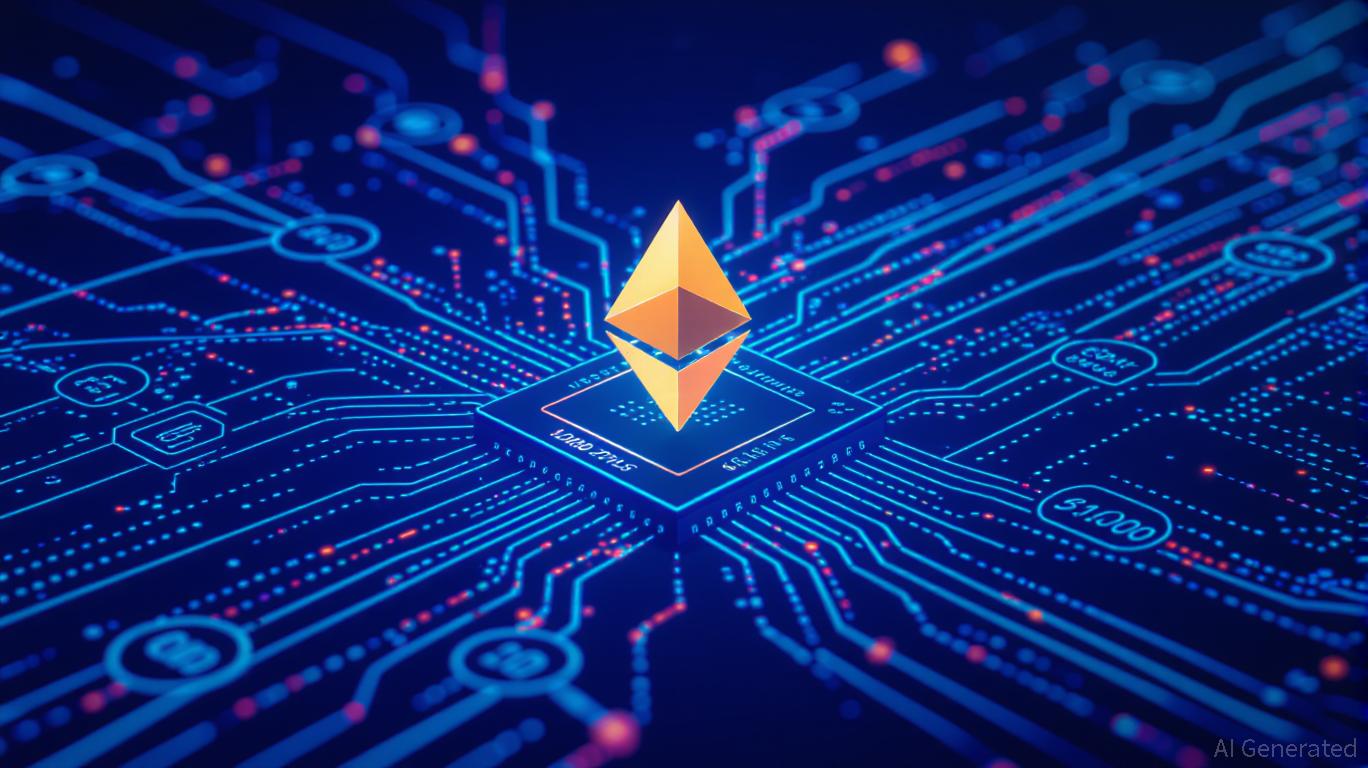EU postpones AI Act while officials balance ethical concerns with international competition
- EU delays AI Act enforcement amid U.S. pressure and tech industry pushback, proposing grace periods and postponed fines. - Key provisions face one-year compliance delay for generative AI and 2027 penalty postponement to ease corporate burdens. - Trump administration warns of retaliatory measures, prompting EU to align AI rules with transatlantic trade interests. - Critics fear weakened enforcement risks EU's ethical AI leadership, while supporters argue it preserves competitiveness. - Final decision on N
The European Union is reevaluating the schedule for rolling out its significant AI Act, with indications that crucial elements may be postponed due to increasing pressure from U.S. officials and leading tech companies. The European Commission, which launched the AI Act in April 2021 as the most comprehensive regulatory system for artificial intelligence globally, is now being urged to relax enforcement to minimize economic tensions with the U.S. and reduce compliance challenges for technology firms, according to
These potential changes, included in a "simplification package" set for a final decision on November 19, would grant generative AI companies a one-year grace period to comply and delay penalties for transparency breaches until August 2027, as reported by Cointelegraph. The AI Act, which became effective in August 2024, was intended to be phased in over a period of six to 36 months. Enforcement for high-risk AI systems—those that could seriously impact health, safety, or basic rights—was planned for August 2026, according to
This development underscores the broader conflict between the EU’s regulatory goals and the international AI environment. Former U.S. President Donald Trump has threatened countermeasures, such as withholding intelligence or military support for Ukraine, if the EU’s regulations are seen as hostile. As a result, the EU has started informal talks with the Trump administration to better align the AI Act with transatlantic trade priorities, Cointelegraph noted. At the same time, major tech companies like Meta have warned that overly strict rules could leave Europe behind in AI innovation, especially given the sector’s rapid changes.

The AI Act’s initial risk-based approach classifies AI systems from "unacceptable" to "minimal" risk, placing heavy requirements on high-risk uses like biometric monitoring and automated decisions in essential industries. Opponents of the delay argue that easing enforcement could weaken the EU’s position as a leader in ethical AI oversight, while advocates believe it helps maintain the region’s competitiveness in a market largely led by U.S. and Chinese tech giants, Cointelegraph reported.
Thomas Regnier, an official at the European Commission, confirmed that discussions are ongoing but stressed that the AI Act is still a key part of the EU’s digital agenda. "We are still reflecting," he told Cointelegraph, noting that the simplification package will be unveiled on November 19. However, the proposal still needs the backing of EU member countries and the European Parliament, creating uncertainty as the deadline approaches.
The EU’s change in direction illustrates the difficulties of fostering innovation while enforcing regulation in a fast-moving sector. Although the suggested grace period and postponed penalties are intended to lower compliance expenses, they also reflect a practical response to global technology trends. Ultimately, the result of the November 19 vote will decide whether the AI Act maintains its pioneering role or shifts toward a more adaptable model influenced by international and business interests.
---
Disclaimer: The content of this article solely reflects the author's opinion and does not represent the platform in any capacity. This article is not intended to serve as a reference for making investment decisions.
You may also like
Bitcoin News Update: Bitcoin’s Drop to $100k Highlights Short-Term Anxiety Versus Enduring Confidence from Institutions
- Bitcoin fell below $100,000 in Nov 2025 amid geopolitical tensions and profit-taking, wiping $1.3B in crypto liquidations. - Technical indicators showed bearish momentum, with whales selling 38.4k BTC while retail traders bought 415 BTC. - Michael Saylor predicted $150k BTC by year-end, citing institutional adoption, as investors shifted to altcoins like AlphaPepe. - Miners like MARA doubled Bitcoin reserves in Q3, but stocks dipped amid macroeconomic uncertainties and volatile price swings.

Vitalik Buterin Backs ZKsync: Driving Layer 2 Expansion and Unlocking Investment Opportunities
- Vitalik Buterin's endorsement of ZKsync's Atlas upgrade validates its technical innovation, boosting institutional interest and investor confidence. - The upgrade enables direct Ethereum liquidity access, achieving 15,000+ TPS and near-zero fees, positioning ZKsync as a key Layer 2 infrastructure. - Buterin's backing triggered a 120% token price surge and $600M market cap, highlighting its potential to dominate Ethereum's scaling solutions. - ZKsync's tokenomics overhaul prioritizes buybacks and staking

Zuckerberg: *The Social Network* Captured My Mannerisms, But Not My Life
- Mark Zuckerberg praised *The Social Network* for accurately replicating his Harvard-era casual style, including owned T-shirts and fleece jackets. - He criticized the film's narrative, calling its portrayal of his Facebook motivations and fabricated romantic subplot "completely wrong." - Zuckerberg highlighted Hollywood's struggle to grasp tech entrepreneurship's intrinsic appeal, emphasizing real-world innovation vs. dramatization. - Despite narrative disagreements, he bought the film's iconic "Ardsley

Zcash Halving Scheduled for November 2025: Triggering Market Fluctuations and Attracting Speculative Investments
- Zcash's November 2025 halving will cut miner rewards by 50%, mirroring Bitcoin's deflationary model and tightening supply. - Historical data shows post-halving price surges, with Zcash's price rising 472% since October 2025 amid $137M institutional inflows. - Privacy-centric features (30% shielded supply) and speculative demand drive volatility, but regulatory risks and competition pose challenges. - Market dynamics highlight tension between scarcity-driven optimism and macroeconomic uncertainties affect
